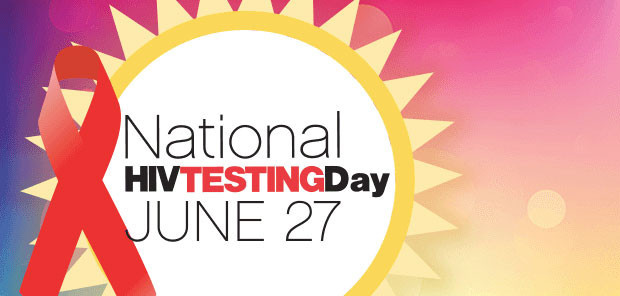Thursday, June 27, marks National HIV Testing Day (#HIVTesting Day and #NHTD), an annual observance to encourage people to get tested for HIV and, if positive, get linked to care and treatment.
This year’s theme, “Level up your self-love: check your status,” calls upon individuals to take charge of their health and wellness. The theme emphasizes showing yourself compassion and respect by prioritizing your health, according to HIV.gov.
Getting tested for HIV is easy, yet many people avoid learning their status. Some may be too scared to get tested, while others may believe they aren’t at risk for the virus.
According to the Centers for Disease Control and Prevention (CDC), about 1.2 million people are living with HIV in the United States and around 14% of them do not know their status. What’s more, nearly 40% of new HIV cases are transmitted by people who don’t they are HIV positive.
Knowing one’s HIV status is the first step toward accessing prevention or treatment options. In addition, starting treatment as soon as possible after acquiring HIV generally leads to better health outcomes because the virus hasn’t had much time to cause damage and build a reservoir. In this way, HIV testing is about self-care.
HIV testing can be free, fast and confidential. For additional privacy, HIV self-tests can be done anywhere and anytime.
To improve HIV screening rates, the CDC partnered with Emory University and others to launch TogetherTakeMeHome, a project that mails free HIV self-tests directly to consumers. TakeMeHome aims to distribute one million free self-test kits over five years.
The CDC recommends the following HIV testing guidelines:
- Everyone between ages 13 and 64 should get tested for HIV at least once as part of their routine health care.
- Those with certain ongoing risk factors—such as having more than one sex partner since their last HIV test or having sex with someone whose sexual history they don’t know—should get tested annually. Sexually active gay and bisexual men may benefit from more frequent testing (for example, every three to six months).
- Pregnant people should get tested for HIV during each pregnancy. Testing pregnant people and treating those with HIV is a highly effective way to prevent babies being born with HIV.
You can help promote NHTD with resources and digital tool kits. For more, visit the CDC’s HIVTestingDay page in English and Spanish. For more background, see HIV.gov’s blog post “Federal Health Leaders Reflect on the Ongoing Importance of HIV Testing.”
If you think you might have been exposed to HIV, it’s important to get tested promptly. You can search the POZ Health Services Directory to find an HIV testing site in your area.
To learn more, click #HIV Testing or read POZ’s Basics on HIV Testing. It reads in part:
The truth is, anyone can get HIV. Some demographic groups are more heavily affected than others, but the risk factors are the same for everyone.
When it comes to HIV testing, the old cliché “knowledge is power” still holds true. Knowing your HIV status, whether negative or positive, puts you in the best position to protect your health and the health of your sexual partners. While there is no cure for HIV or AIDS, effective medications allow HIV-positive people to live a normal, healthy life. Being aware of your HIV status makes it less likely that you will pass the virus to others—both because you and your partners can take precautions and because effective treatment prevents transmission.
Where can I get tested?
HIV testing is widely available at a number of health facilities—in private medical practices, public health clinics, hospital emergency rooms, pharmacies and mobile testing vans run by clinics and health organizations.
You can also purchase at-home testing kits that can provide results within 20 to 40 minutes.
Counseling is an important part of HIV testing. It may be done face-to-face with a doctor, at a testing site with a counselor or over the phone with a counselor working for a company that supplies home testing kits. These conversations play a valuable role in informing anyone who’s tested negative about maintaining their negative status and advising those who test positive about their health care.
Every state has its own HIV hotline from which you can obtain information about where to get tested, including anonymous testing sites, where available.







Comments
Comments